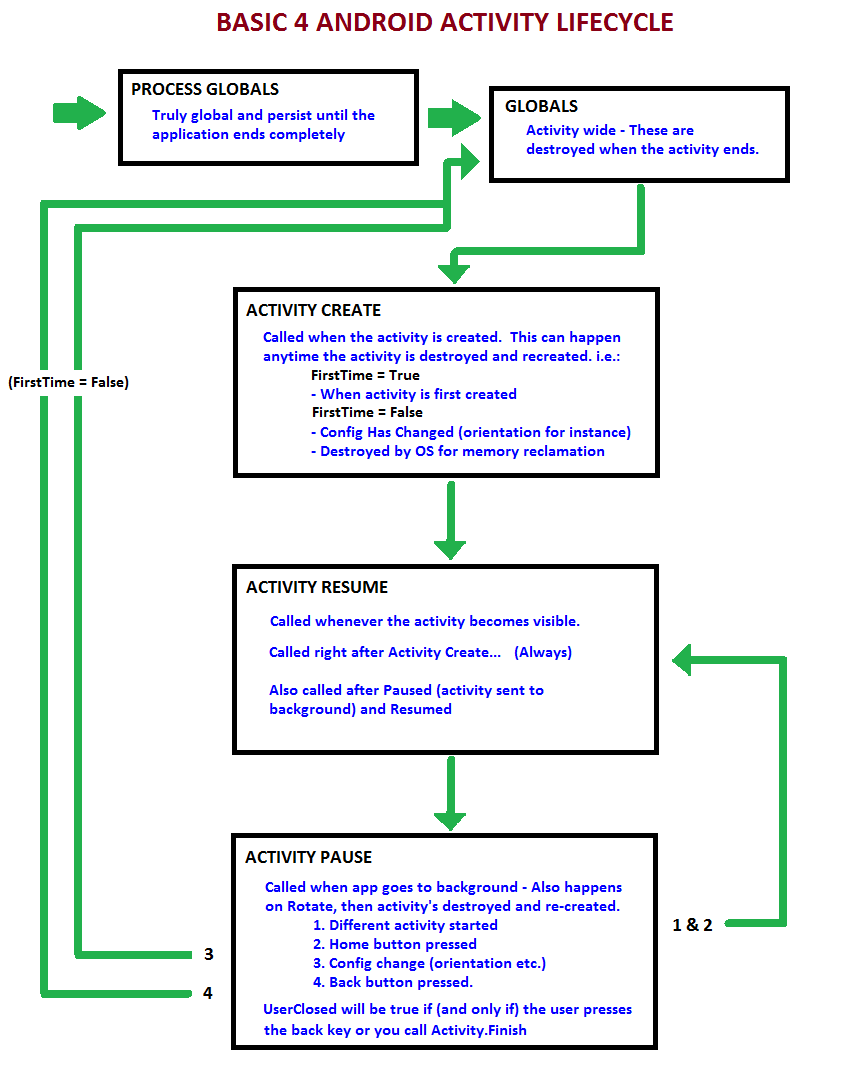Hi all...
I'm posting this in the hopes that it'll help anyone programming with B4A to understand the life cycle of an activity. I struggled with this a bit, and the graphical representation made it easier for me to understand. I hope it helps some of you. (Thanks to Erel for proofing it for me!) Cheers...

I'm posting this in the hopes that it'll help anyone programming with B4A to understand the life cycle of an activity. I struggled with this a bit, and the graphical representation made it easier for me to understand. I hope it helps some of you. (Thanks to Erel for proofing it for me!) Cheers...

Last edited:
